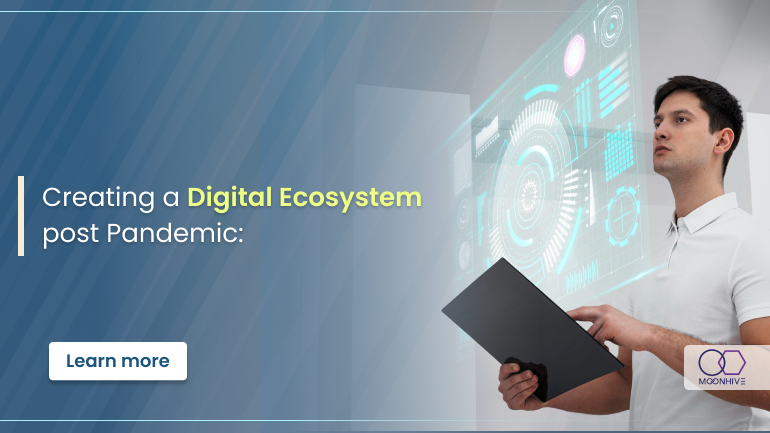Ever since the catastrophic aftermath of the global pandemic, business organizations worldwide have been subjected to a drastic paradigm shift in their operations with the help of technology, which gave rise to an era of digitally accelerated workspaces. As we go through our post-pandemic scenario, MNCs and other enterprises are transforming and redefining their modus operandi to ensure a successful and sustainable journey towards digital growth. Let us explore some key strategies for businesses to thrive in the “new normal” of digital transformation post the pandemic.
Agile Adoption for Flexibility:
Adapting and evolving to changing circumstances has become crucial in the post-pandemic world. Agile methodologies offer a flexible approach to project management, allowing teams to respond promptly to various evolving requirements. Embracing agility fosters a culture if innovation and responsiveness, crucial elements in a rapidly changing digital atmosphere.
Enhanced Cybersecurity Measures:
With the increased reliance on digital platforms, the importance of cybersecurity has never been so critical. Organizations must prioritize robust cybersecurity measures to protect sensitive data and thwart evolving cyber threats. Employing and Implementing highly advanced threat detection, regular security audits and employee training programs can help ensure a fortified defence against potential breaches.
Cloud Migration for Scalability:
Cloud computing has emerged as a mainstay for digital transformation, After the pandemic, businesses are giving more importance to cloud migration to improve and enhance scalability, reduce infrastructure costs and enable remote collaboration. The cloud provides a secure and flexible environment, facilitating seamless access to resources and applications from anywhere in the world.
Data-Driven Decision-Making:
Today, data is the currency of innovation. Successful organizations leverage data analytics to derive meaningful insights, inform decision-making processes and gain a competitive edge. Post the pandemic, business organizations must invest in advanced analytics tools and cultivate a data-driven culture to harness the full potential of their data assets.
Customer-Centric Digital Experiences:
The pandemic caused the sudden shift towards online interactions, making a seamless digital experience crucial for customer satisfaction. Organizations must prioritize creating intuitive and personalized digital interfaces, thereby ensuring a positive and engaging experience for the customers across various touchpoints. Customer-centric digital strategies enhance brand loyalty and drive business growth.
Employee Empowerment Through Digital Upskilling:
As digital technologies evolve, business organizations must invest in upskilling their workforce to stay ahead of the curve. Empowering employees with digital skills not only enhances their productivity but also ensures the company’s ability to leverage emerging advanced technologies effectively. Continuous training programs foster a culture of learning and adaptation.
Collaboration Tools for Remote Work:
In the post-pandemic scenario, remote work has become a permanent fixture. Adopting advanced collaboration tools can enhance effective communication and project management, irrespective of geographical distances. Business enterprises must invest in platforms that support virtual teamwork, ensuring seamless cooperation among dispersed teams.
Innovative Tools Integration:
Innovation is at the core of the success of digital transformation. Organizations should actively explore and integrate highly advanced and innovative technologies such as Artificial Intelligence (AI), Internet of Things (IoT) and Robotic Process Automation (RPA) to streamline processes, enhance efficiency and drive innovation.
Digital Customer Engagement Strategies:
Customer engagement in the digital space requires customized and tailor-made strategies. After the pandemic, business enterprises need to invest in multi-channel communication, personalized marketing and 24/7 proactive customer support. Utilizing and leveraging digital platforms for customer engagement improves brand loyalty and strengthens the customer-business relationship.
Continuous Adaptation and Evolution:
Business organizations must cultivate a mindset of continuous adaptation and evolution. Regularly reassessing strategies, incorporating feedback and staying shoulder-to-shoulder with technological advancements ensures that businesses remain agile and resilient in the ever-evolving digital scenario.
To conclude, as organizations begin their digital transformation journey after the pandemic, it is essential to adopt certain strategies for achieving success. The pillars of agility, cybersecurity, cloud adoption, data-driven decision-making, and customer and employee empowerment must be embraced to thrive in the digital age. These strategies will not only help businesses navigate the complexities of the post-pandemic landscape but also position them as leaders in the evolving world of digital transformation.
